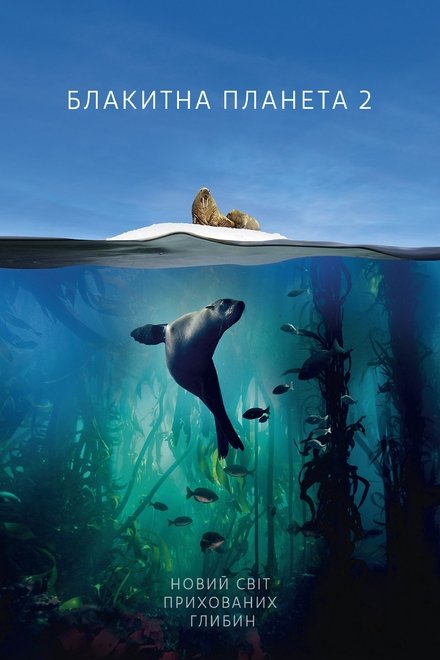

Doherty shares that they returned to the brine pool in “Blue Planet II” because the way they could film it now, with the additional research they had done and the new technology they were using, made it feel like they could tell a new story. Inherently that is educational, and to us, it’s about hopefully connecting people to life beneath the waves so we can come to care about it more and feel closer to it because that’s when we can make a positive influence.”Īnd that is not to say that the team shut down the idea of returning to an area simply because they may have seen it before.
#BLUE PLANET II SEASON 2 EPISODE 5 SERIES#
“We would like to think this is entertainment TV at the heart of the series with some characters you’ve never met before, but what you’ll love about it is it’s new you’re learning stuff it’s going to amaze you. “We set ourselves a high bar because we really wanted people who really know the ocean to learn things they didn’t know,” Honeyborne says. The “Blue Planet II” team heard the story “anecdotally” from a fisherman off an island in the Indian Ocean and decided, after talking with some other locals who also corroborated the story, that they had to document it. It was a phenomenon previously talked about but never before caught on camera. One of the experiences “Blue Planet II” provides is witnessing a giant trevally leap out of the ocean (“like a missile!” says Honeyborne), turn in mid-air and catch birds. “If you think that something is achievable, even if someone has never managed to film it before, then we’ll press the green light and go for it.” And then it’s a two-and-a-half year process trying to capture these theoretical stories on-camera, to varying degrees of success,” Brownlow says. If episode one is anything to go by it has been well worth the wait.“A year before we had our entire team out there talking to scientists and trying to break these groundbreaking stories. The series has been four years in the making, with the various teams exploring every ocean, “seeking extraordinary stories”. Over only a few months the wrasse transforms from female to male. When female wrasse reach a certain weight, their body undergoes a dramatic transformation, ceasing to create certain enzymes and instead producing male hormones. The Sheepshead Wrasse is capable of changing sex (Photo: BBC) The Asian Sheepshead Wrasse is capable of changing sexĪlong with being quite possibly the ugliest fish known to man, the Asian Sheepshead Wrasse is also capable of changing sex. “This sudden warming, most likely a consequence of human activity, is having a profound impact on its wildlife.”ĩ.

“Here (The Arctic) in the past 30 years the extent of the ice in summer has been reduced by 40%,” says Sir David. The opening episode ends with a warning of the profound impact climate change has had. The declining health of our planet has been a common theme of previous BBC natural world documentaries and Blue Planet II is no different. “These different species appear to be old friends,” says Sir David.

Some scientists suggest that individuals may recognise each other. When the two species meet they interact and bond, altering their calls. False killer whales interact with “old friend” dolphins off the coast of New Zealand (Photo: BBC) The close relatives of the orca do not intend any harm, however. In a thrilling chase False Killer Whales (actually a type of dolphin) pursue other dolphins off the coast of New Zealand. 7. ‘False Killer Whales’ form friendships with dolphins Plankton are the lungs of the planetĪs mobula ray feed on plankton, the microscopic lifeforms turn fluorescent, lighting up the sea, or as Sir David puts it, “the feasting rays swim through them, creating an extraordinary ballet of life and death.”Īs well as their capability to deliver a spectacular light show, plankton are also vital to Earth’s oxygen supply.Ĭombined with seaweeds and sea grasses, plankton produce as much oxygen as all the forests and grassy plains on land. The trevally are capable of leaping from the water and calculating the air speed, altitude and trajectory of the tern, catching the prey in mid air, before devouring it beneath the surface. Trevally are predators in and out of the ocean (Photo: BBC) In episode one this takes place between the monstrous trevally and a baby tern. Trevally can calculate air speed, altitude and trajectory of preyĪ David Attenborough documentary wouldn’t be complete without a nerve-jangling battle of wits between predator and prey.

In its lifetime a large storm can release energy via waves that is the equivalent to 10,000 nuclear bombs. It isn’t just creatures that are under the microscope in Blue Planet II – the immense power of waves are also examined. Waves possess explosive power Giant Waves breaking along the Wild Coast, South Africa (Photo: BBC)


 0 kommentar(er)
0 kommentar(er)
